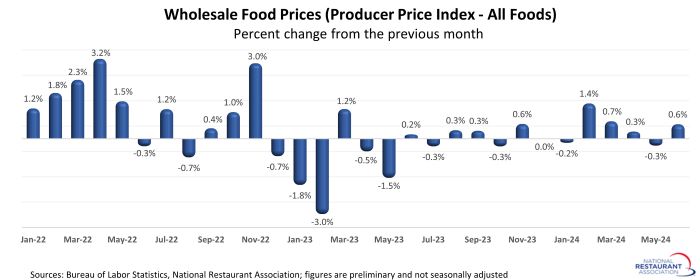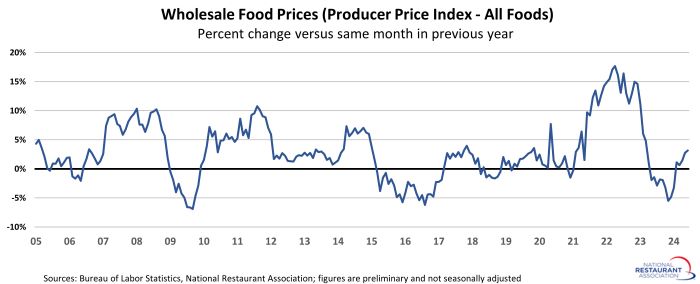Food Costs
Wholesale food prices continued rising in June
Average wholesale food prices continued to trend higher in June, according to preliminary data from the Bureau of Labor Statistics. The Producer Price Index for All Foods – which represents the change in average prices paid to domestic producers for their output – rose 0.6% between May and June.
June represented the fourth increase in the last five months. The recent upward trend followed an 8-month period in which the food price index remained relatively steady.

That moderation in 2023 led to some pricing relief for restaurant operators, with average wholesale food prices posting 9 consecutive months of year-over-year declines.
That relief is fading, as the trendline is now pointing higher. Average wholesale food prices stood 3.2% above their year-ago level in June. That marked the strongest 12-month increase since March 2023.
It also means average food prices remain well above pre-pandemic levels. As of June 2024, the Producer Price Index for All Foods stood 29% above its February 2020 reading.

Although prices for many food commodities leveled off or declined in recent months, others continued to trend higher. As a result, the degree to which restaurants are experiencing relief depends on the menu mix of each individual operation.
Producer prices for eggs (107.5%), butter (29.7%), confectionary materials (25.7%), pork (19.5%), refined sugar (16.9%), milk (7.1%), coffee (6.0%) and cheese (4.6%) stood well above their June 2023 levels. The fresh vegetables index jumped 22.0% during the last 12 months, while the fresh fruits and melons index declined 15.0%.
Until wholesale prices start trending lower across a broad range of commodities, food costs will continue to be a headwind for many restaurants.
Track more economic indicators and read more analysis and commentary from the Association's economists.